A fibre glass company is considering the possibility of introducing a new product. Because of the expense involved in developing the initial moulds and acquiring the necessary equipment to produce fibreglass, it has decided to conduct a pilot study to make sure that the market will be adequate. They estimate that the pilot study will cost £12,000. Furthermore, the pilot study can be either successful or unsuccessful. The basic decisions are to build a large manufacturing facility, a small manufacturing facility, or no facility at all. With a favourable market, the company can expect to make £100,000 from the large facility or £60,000 from the smaller facility. If the market is unfavourable, however, they estimate that they would lose £40,000 with a large facility, while they would lose only £30,000 with the small facility. The company estimates that the probability of a favourable market given a successful pilot study is 0.7. The probability of an unfavourable market given an unsuccessful pilot study result is estimated to be 0.8. They feel that there is a 50-50 chance that the pilot study will be successful. Of course, the company could decide not to commission the pilot study and therefore make the decision as to whether to build a large facility, small facility or no facility at all. Without doing any testing in a pilot study they estimate that the probability of a successful market is 0.7. Draw a decision tree for the above company and write down the REVENUES and COSTS at the end of branches. The number of the decision boxes are 5 and the chances nodes are 7
A fibre glass company is considering the possibility of introducing a new product. Because of the expense involved in developing the initial moulds and acquiring the necessary equipment to produce fibreglass, it has decided to conduct a pilot study to make sure that the market will be adequate. They estimate that the pilot study will cost £12,000. Furthermore, the pilot study can be either successful or unsuccessful. The basic decisions are to build a large manufacturing facility, a small manufacturing facility, or no facility at all. With a favourable market, the company can expect to make £100,000 from the large facility or £60,000 from the smaller facility. If the market is unfavourable, however, they estimate that they would lose £40,000 with a large facility, while they would lose only £30,000 with the small facility. The company estimates that the probability of a favourable market given a successful pilot study is 0.7. The probability of an unfavourable market given an unsuccessful pilot study result is estimated to be 0.8. They feel that there is a 50-50 chance that the pilot study will be successful. Of course, the company could decide not to commission the pilot study and therefore make the decision as to whether to build a large facility, small facility or no facility at all. Without doing any testing in a pilot study they estimate that the probability of a successful market is 0.7. Draw a decision tree for the above company and write down the REVENUES and COSTS at the end of branches. The number of the decision boxes are 5 and the chances nodes are 7
Chapter1: Taking Risks And Making Profits Within The Dynamic Business Environment
Section: Chapter Questions
Problem 1CE
Related questions
Question
draw the decision tree

Transcribed Image Text:A fibre glass company is considering the possibility of introducing a new product. Because of the
expense involved in developing the initial moulds and acquiring the necessary equipment to produce
fibreglass, it has decided to conduct a pilot study to make sure that the market will be adequate.
They estimate that the pilot study will cost £12,000. Furthermore, the pilot study can be either
successful or unsuccessful. The basic decisions are to build a large manufacturing facility, a small
manufacturing facility, or no facility at all. With a favourable market, the company can expect to
make £100,000 from the large facility or £60,000 from the smaller facility. If the market is
unfavourable, however, they estimate that they would lose £40,000 with a large facility, while they
would lose only £30,000 with the small facility. The company estimates that the probability of a
favourable market given a successful pilot study is 0.7. The probability of an unfavourable market
given an unsuccessful pilot study result is estimated to be 0.8. They feel that there is a 50-50 chance
that the pilot study will be successful. Of course, the company could decide not to commission the
pilot study and therefore make the decision as to whether to build a large facility, small facility or no
facility at all. Without doing any testing in a pilot study they estimate that the probability of a
successful market is 0.7.
Draw a decision tree for the above company and write down the REVENUES and COSTS at the end
of branches.
The number of the decision boxes are 5 and the chances nodes are 7
Expert Solution
This question has been solved!
Explore an expertly crafted, step-by-step solution for a thorough understanding of key concepts.
Step by step
Solved in 2 steps with 1 images

Knowledge Booster
Learn more about
Need a deep-dive on the concept behind this application? Look no further. Learn more about this topic, management and related others by exploring similar questions and additional content below.Recommended textbooks for you
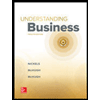
Understanding Business
Management
ISBN:
9781259929434
Author:
William Nickels
Publisher:
McGraw-Hill Education
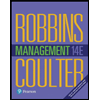
Management (14th Edition)
Management
ISBN:
9780134527604
Author:
Stephen P. Robbins, Mary A. Coulter
Publisher:
PEARSON
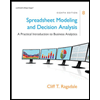
Spreadsheet Modeling & Decision Analysis: A Pract…
Management
ISBN:
9781305947412
Author:
Cliff Ragsdale
Publisher:
Cengage Learning

Understanding Business
Management
ISBN:
9781259929434
Author:
William Nickels
Publisher:
McGraw-Hill Education

Management (14th Edition)
Management
ISBN:
9780134527604
Author:
Stephen P. Robbins, Mary A. Coulter
Publisher:
PEARSON

Spreadsheet Modeling & Decision Analysis: A Pract…
Management
ISBN:
9781305947412
Author:
Cliff Ragsdale
Publisher:
Cengage Learning

Management Information Systems: Managing The Digi…
Management
ISBN:
9780135191798
Author:
Kenneth C. Laudon, Jane P. Laudon
Publisher:
PEARSON
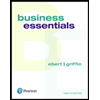
Business Essentials (12th Edition) (What's New in…
Management
ISBN:
9780134728391
Author:
Ronald J. Ebert, Ricky W. Griffin
Publisher:
PEARSON
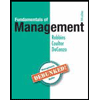
Fundamentals of Management (10th Edition)
Management
ISBN:
9780134237473
Author:
Stephen P. Robbins, Mary A. Coulter, David A. De Cenzo
Publisher:
PEARSON